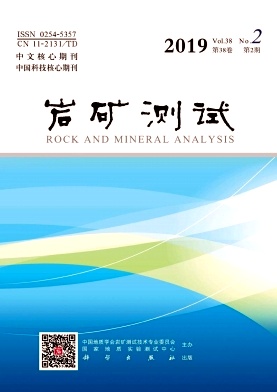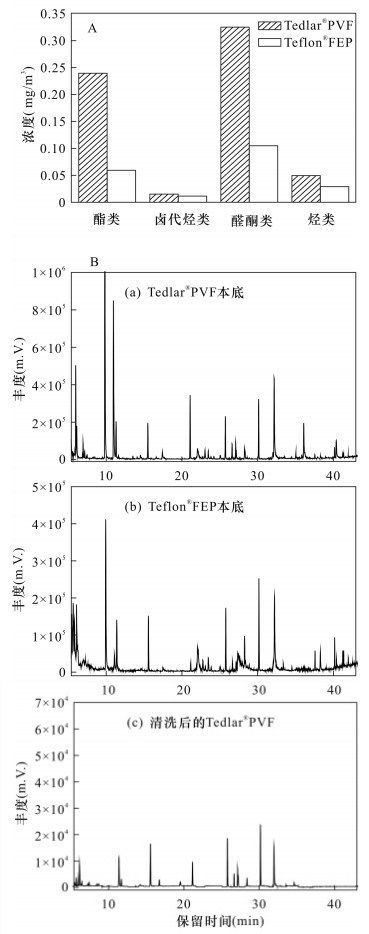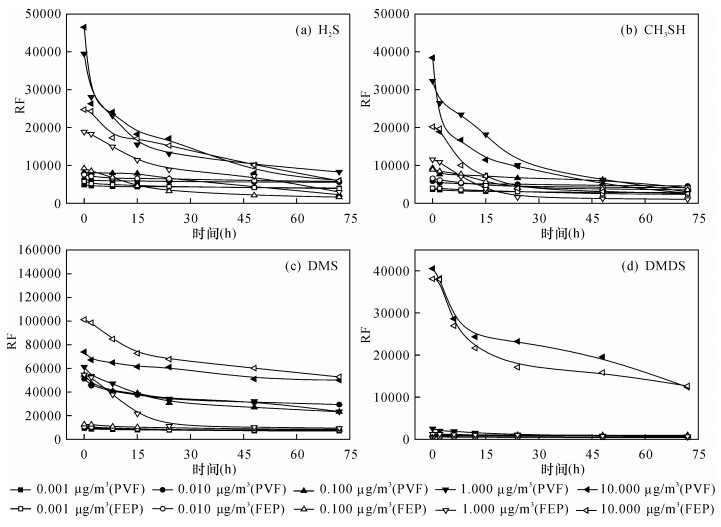| [1] |
Almomani F A, Bhosale R R, Kumar A, et al.Removal of volatile sulfur compounds by solar advanced oxidation technologies and bioprocesses[J].Solar Energy, 2016, 135:348-358. doi: 10.1016/j.solener.2016.05.037
CrossRef Google Scholar
|
| [2] |
Nagata Y.Measurement of Odor Threshold by Triangle Odor Bag Method[R].Odor Measurement Review, Ministry of Environment (MOE), Japan, 2003: 118-127.
Google Scholar
|
| [3] |
Li Q, Lancaster Jr J R.Chemical foundations of hydrogen sulfide biology[J].Nitric Oxide, 2013, 35:21-34. doi: 10.1016/j.niox.2013.07.001
CrossRef Google Scholar
|
| [4] |
沈秀娥, 常淼, 刘保献, 等.大气预浓缩仪-GC/FPD测定环境空气中的痕量硫化物[J].中国环境监测, 2015, 31(6):103-108. doi: 10.3969/j.issn.1002-6002.2015.06.022
CrossRef Google Scholar
Shen X E, Chang M, Liu B X, et al.Determination of trace sulfur compounds in environmental air by GC/FPD coupled the air preconcentrations[J].Environmental Monitoring in China, 2015, 31(6):103-108. doi: 10.3969/j.issn.1002-6002.2015.06.022
CrossRef Google Scholar
|
| [5] |
孟天竹, 张金波, 蔡祖聪.气相色谱法测定土壤中挥发性硫化物[J].环境监测管理与技术, 2016, 28(1):46-49. doi: 10.3969/j.issn.1006-2009.2016.01.012
CrossRef Google Scholar
Meng T Z, Zhang J B, Cai Z C.Determination of sulfur gases emitted from soils by gas chromatography with sulfur chemiluminescence detector[J].The Administration and Technique of Environmental Monitoring, 2016, 28(1):46-49. doi: 10.3969/j.issn.1006-2009.2016.01.012
CrossRef Google Scholar
|
| [6] |
Borrás E, Tortajada-Genaro L A, Muñoz A.Determina-tion of reduced sulfur compounds in air samples for the monitoring of malodor caused by landfills[J].Talanta, 2016, 148:472-477. doi: 10.1016/j.talanta.2015.11.021
CrossRef Google Scholar
|
| [7] |
Sulyok M, Haberhauer-Troyer C, Rosenberg E.Obser-vation of sorptive losses of volatile sulfur compounds during natural gas sampling[J].Journal of Chromatography A, 2002, 946(1-2):301-305. doi: 10.1016/S0021-9673(01)01541-2
CrossRef Google Scholar
|
| [8] |
Trabue S, Scoggin K, Mitloehner F, et al.Field sampling method for quantifying volatile sulfur compounds from animal feeding operations[J].Atmospheric Environment, 2008, 42(14):3332-3341. doi: 10.1016/j.atmosenv.2007.03.016
CrossRef Google Scholar
|
| [9] |
施玉格, 李刚.气相色谱质谱法测定环境空气中恶臭硫化物成分[J].干旱环境监测, 2014, 28(4):174-177. doi: 10.3969/j.issn.1007-1504.2014.04.007
CrossRef Google Scholar
Shi Y G, Li G.Analysis of the stench sulfide components in the environmental air by GC/MS[J].Arid Environmental Monitoring, 2014, 28(4):174-177. doi: 10.3969/j.issn.1007-1504.2014.04.007
CrossRef Google Scholar
|
| [10] |
Parker D B, Perschbacher-Buser Z L, Andy C N, et al. Recovery of agricultural odors and odorous compounds from polyvinyl fluoride film bags[J].Sensors, 2010, 10(9):8536-8552. doi: 10.3390/s100908536
CrossRef Google Scholar
|
| [11] |
Mochalski P, Wzorek B, Śliwka I, et al.Suitability of different polymer bags for storage of volatile sulphur compounds relevant to breath analysis[J].Journal of Chromatography B, 2009, 877(3):189-196. doi: 10.1016/j.jchromb.2008.12.003
CrossRef Google Scholar
|
| [12] |
Jo S H, Kim K H, Shon Z H, et al.Identification of con-trol parameters for the sulfur gas storability with bag sampling methods[J].Analytica Chimica Acta, 2012, 738:51-58. doi: 10.1016/j.aca.2012.06.010
CrossRef Google Scholar
|
| [13] |
Kim Y H, Kim K H, Jo S H, et al.Comparison of storage stability of odorous VOCs in polyester aluminum and polyvinyl fluoride Tedlar® bags[J].Analytica Chimica Acta, 2012, 712:162-167. doi: 10.1016/j.aca.2011.11.014
CrossRef Google Scholar
|
| [14] |
Ahn J H, Deep A, Kim K H.The storage stability of bio-genic volatile organic compounds (BVOCs) in polyester aluminum bags[J].Atmospheric Environment, 2016, 14:430-434.
Google Scholar
|
| [15] |
董秀玥.配对t检验与成组t检验优选方法研究[J].数理医药学杂志, 2010, 23(1):11-14. doi: 10.3969/j.issn.1004-4337.2010.01.004
CrossRef Google Scholar
Dong X Y.Study on the optimal method of paired t test and group t test[J].Journal of Mathematical Medicine, 2010, 23(1):11-14. doi: 10.3969/j.issn.1004-4337.2010.01.004
CrossRef Google Scholar
|
| [16] |
Sulyok M, Haberhauer-Troyer C, Rosenberg E.Investiga-tion of the stability of selected volatile sulfur compounds in different sampling containers[J].Journal of Chromatography A, 2001, 917(1-2):367-374. doi: 10.1016/S0021-9673(01)00654-9
CrossRef Google Scholar
|
| [17] |
武汉大学.分析化学(第四版)[M].北京:高等教育出版社, 2000.
Google Scholar
Wuhan University.Analytical Chemistry(4th Edition)[M].Beijing:Higher Education Press, 2000.
Google Scholar
|
| [18] |
Foo K Y, Hameed B H.Insights into modeling of adsor-ption isotherm systems[J].Chemical Engineering Journal, 2010, 156(1):2-10. doi: 10.1016/j.cej.2009.09.013
CrossRef Google Scholar
|
| [19] |
Andino J M, Bulter J W.A study of stability of method-fueled vehicle emission in tedlar bags[J].Environment Science Technology, 1991, 25(9):1644-1649. doi: 10.1021/es00021a017
CrossRef Google Scholar
|
| [20] |
Behera S N, Sharma M.Degradation of SO2, NO2 and NH3 leading to formation of secondary inorganic aerosols:An environmental chamber study[J].Atmospheric Environment, 2011, 45(24):4015-4024. doi: 10.1016/j.atmosenv.2011.04.056
CrossRef Google Scholar
|







 DownLoad:
DownLoad:
